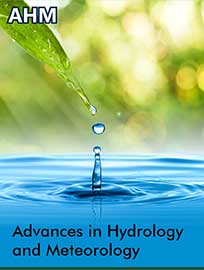 Mini Review
Mini Review
Educating the Next Generation on Climate Change and Sustainability
John J Qu1,2,3*, and Raymond P Motha1
1Global Environmental and Natural Resource Institute (GENRI), George Mason University, USA
2Department of Geography and Geoinformation Science (GGS), George Mason University, USA
3College of Science, Institute for a Sustainable Earth, George Mason University, USA
John J Qu, Global Environmental and Natural Resource Institute (GENRI), Department of Geography and Geoinformation Science (GGS), College of Science, Institute for a Sustainable Earth, George Mason University, USA.
Received Date: April 07, 2022; Published Date: April 25, 2022
Abstract
The impact of changing climate on natural resources is among the greatest challenges that currently threaten Earth. It is critical to educate the next generation of society on these impacts that endanger the sustainability of natural resources in the Earth system. A new textbook entitled “Climate Change and a Sustainable Earth” was published by Cambridge Scholars Publishing on March 2022 (see Figure 1). The recently published textbook reviews the basic scientific principles of climate change as they relate to the environment, natural and human resources. At the heart of this textbook is the lesson that our planet does not work solely as a physical system, but rather as a linked biological and physical system. This has always been true, beginning with the origin of life with blue-green bacteria oxygenating the atmosphere and making higher life-forms possible. It is even truer today, with a multiplicity of living systems, from oceans to rainforests and even humanmodified ones like agroecosystems, all affecting the environment locally and globally [1]. We are truly saddened by the passing of Dr. Lovejoy on 25 December 2021. Dr. Lovejoy was, a Distinguished University Professor of Environmental Science and Policy, the founding Scientific Director of the Institute for a Sustainable Earth at George Mason University. He also was a world-renowned expert in the field of environmental science and lifetime climate crusader. In fact, he has been referred to as “the Father of Biodiversity”. He provided inspiration, encouragement, and support to the authors of this textbook. We are gratefully indebted to this compassionate scientist (Figure 1,2).
-
John J Qu, Raymond P Motha. Educating the Next Generation on Climate Change and Sustainability. Adv in Hydro & Meteorol. 1(2): 2022. AHM.MS.ID.000508.
-

This work is licensed under a Creative Commons Attribution-NonCommercial 4.0 International License.






